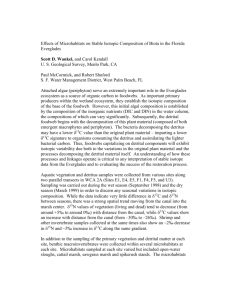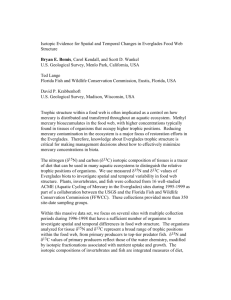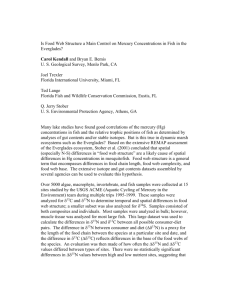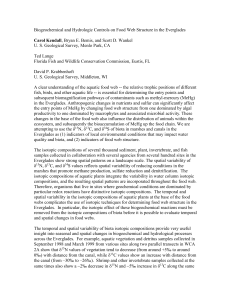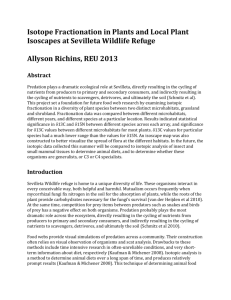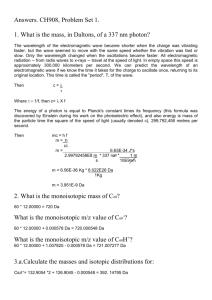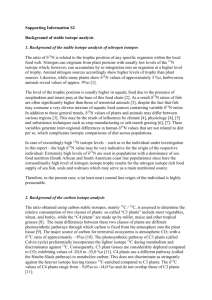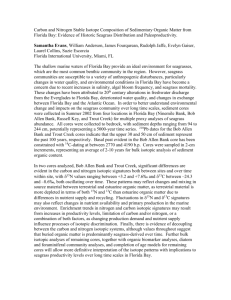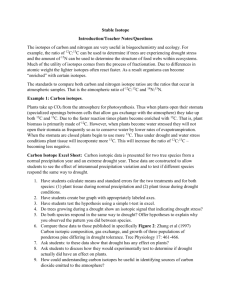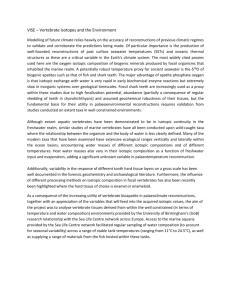Spatial and Temporal Patterns in Isotopic Composition of Aquatic
advertisement
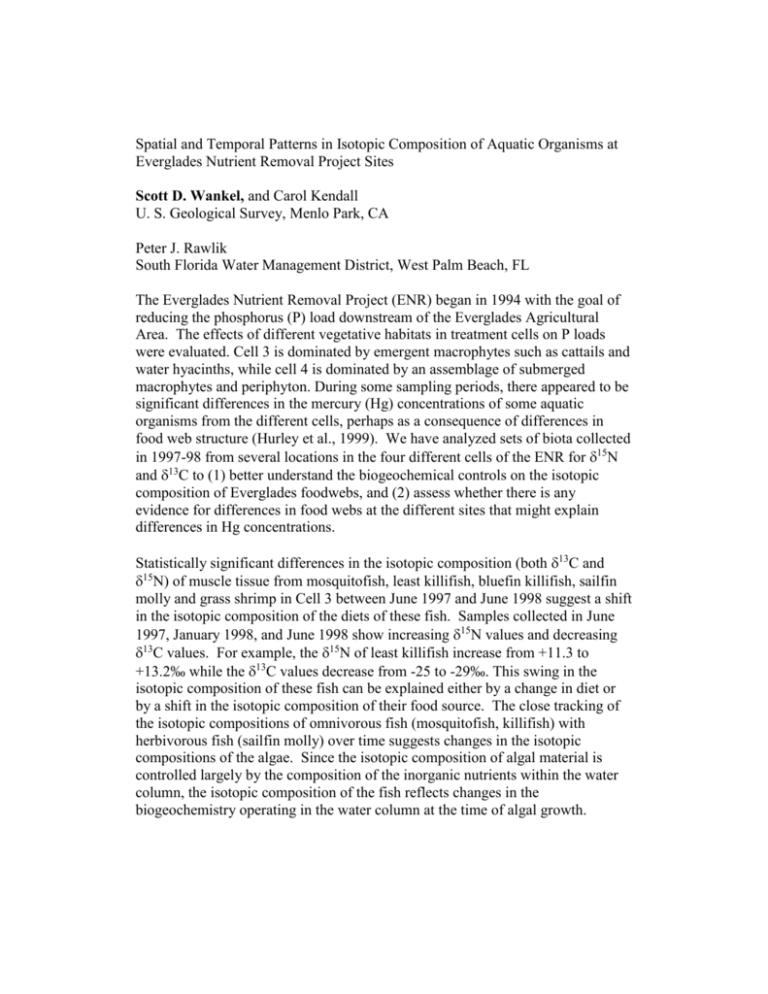
Spatial and Temporal Patterns in Isotopic Composition of Aquatic Organisms at Everglades Nutrient Removal Project Sites Scott D. Wankel, and Carol Kendall U. S. Geological Survey, Menlo Park, CA Peter J. Rawlik South Florida Water Management District, West Palm Beach, FL The Everglades Nutrient Removal Project (ENR) began in 1994 with the goal of reducing the phosphorus (P) load downstream of the Everglades Agricultural Area. The effects of different vegetative habitats in treatment cells on P loads were evaluated. Cell 3 is dominated by emergent macrophytes such as cattails and water hyacinths, while cell 4 is dominated by an assemblage of submerged macrophytes and periphyton. During some sampling periods, there appeared to be significant differences in the mercury (Hg) concentrations of some aquatic organisms from the different cells, perhaps as a consequence of differences in food web structure (Hurley et al., 1999). We have analyzed sets of biota collected in 1997-98 from several locations in the four different cells of the ENR for 15N and 13C to (1) better understand the biogeochemical controls on the isotopic composition of Everglades foodwebs, and (2) assess whether there is any evidence for differences in food webs at the different sites that might explain differences in Hg concentrations. Statistically significant differences in the isotopic composition (both 13C and 15N) of muscle tissue from mosquitofish, least killifish, bluefin killifish, sailfin molly and grass shrimp in Cell 3 between June 1997 and June 1998 suggest a shift in the isotopic composition of the diets of these fish. Samples collected in June 1997, January 1998, and June 1998 show increasing 15N values and decreasing 13C values. For example, the 15N of least killifish increase from +11.3 to +13.2‰ while the 13C values decrease from -25 to -29‰. This swing in the isotopic composition of these fish can be explained either by a change in diet or by a shift in the isotopic composition of their food source. The close tracking of the isotopic compositions of omnivorous fish (mosquitofish, killifish) with herbivorous fish (sailfin molly) over time suggests changes in the isotopic compositions of the algae. Since the isotopic composition of algal material is controlled largely by the composition of the inorganic nutrients within the water column, the isotopic composition of the fish reflects changes in the biogeochemistry operating in the water column at the time of algal growth. The 15N and 13C values for mosquitofish, sailfin molly, and shrimp collected in June 1998 from Cell 3 and Cell 4 show significantly different averages and distributions (fig. 1). The data from Cell 3 plot in distinct clusters whereas data from Cell 4 show a striking alignment along a negative slope. It is not clear whether these differences reflect differences in diet or just differences in the isotopic composition of plants at the base of the food webs. At both sites, sailfin mollys have the lowest 15N and highest 13C values, shrimp have intermediate values, and mosquitofish have the highest 15N and lowest 13C values. Hence, there appears to be no major differences in their relative trophic positions in June 1998. Therefore, it is likely that the differences in 13C and 15N of organisms between Cell 3 and Cell 4 reflect differences in the isotopic composition of the diets between cells. Aquatic plants from Cell 4 show a much greater range of 13C values than plants from Cell 3, but a similar range of 15N values. The larger range of 13C values in Cell 4 may be related to the higher amounts of open water and periphyton growth in Cell 4 compared to Cell 3. Increased light penetration may cause larger changes in the 13C of dissolved inorganic carbon (DIC) in the water column by allowing more light penetration and therefore more benthic photosynthesis. Higher rates of benthic photosynthesis would lead to higher 13C values as seen in the organisms sampled in Cell 4. Figure 1. 13C and 15N values of selected biota collected from Cell 3 and Cell 4 in June 1998. The variations in isotopic composition over both time and space within the ENR emphasize the importance of localized biogeochemistry for interpretation of stable isotope data. Fluctuations in water depth (hydroperiod) and plant cover over time in the ENR may explain a significant portion of the variability of 13C and 15N of primary consumers (mosquitofish, killifish, sailfin mollies). Understanding the mechanisms for the foodweb base shift, whether it is a shift in diet or isotopic composition of the diet (or both?), is critical to tracing contaminant bioaccumulation within these Everglades foodwebs. References Hurley, J.P., Cleckner, L.B., and Gorski, P., 1999. Everglades Nutrient Removal Project small fish bioaccumulation study – final report to the SFWMD (contract PC C-8691-0300). Scott Wankel, U.S. Geological Survey, 345 Middlefield Road, MS 434, Menlo Park, CA, 94025, Phone: 650-329-4303, Fax: 650-329-5590, sdwankel@usgs.gov
